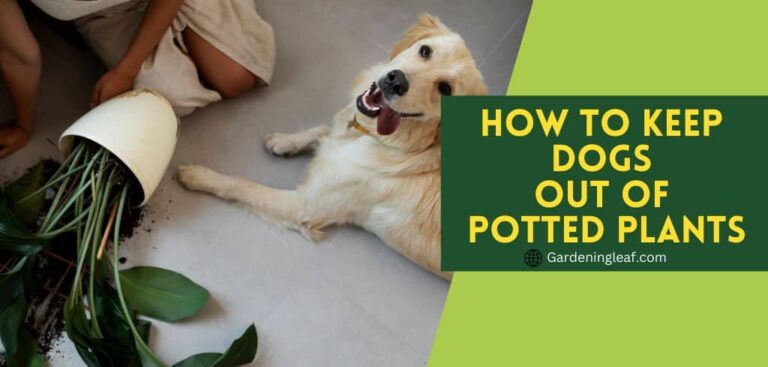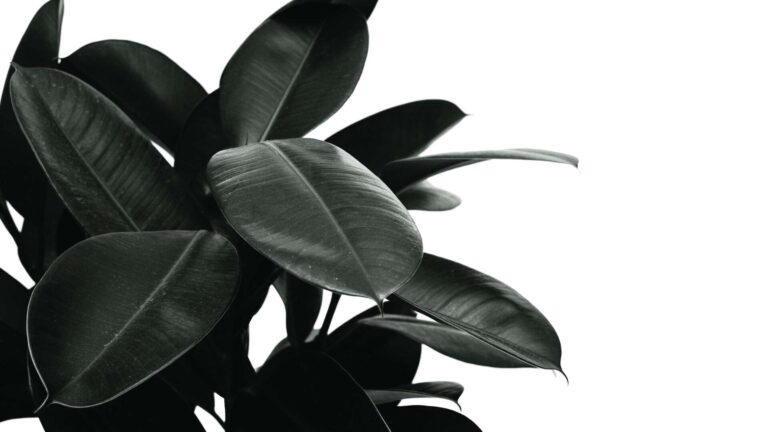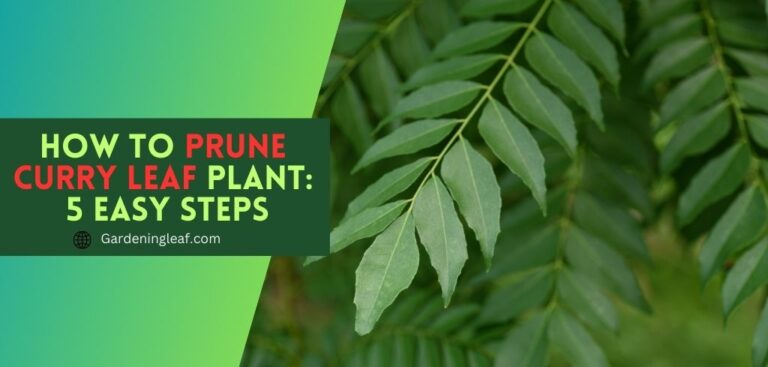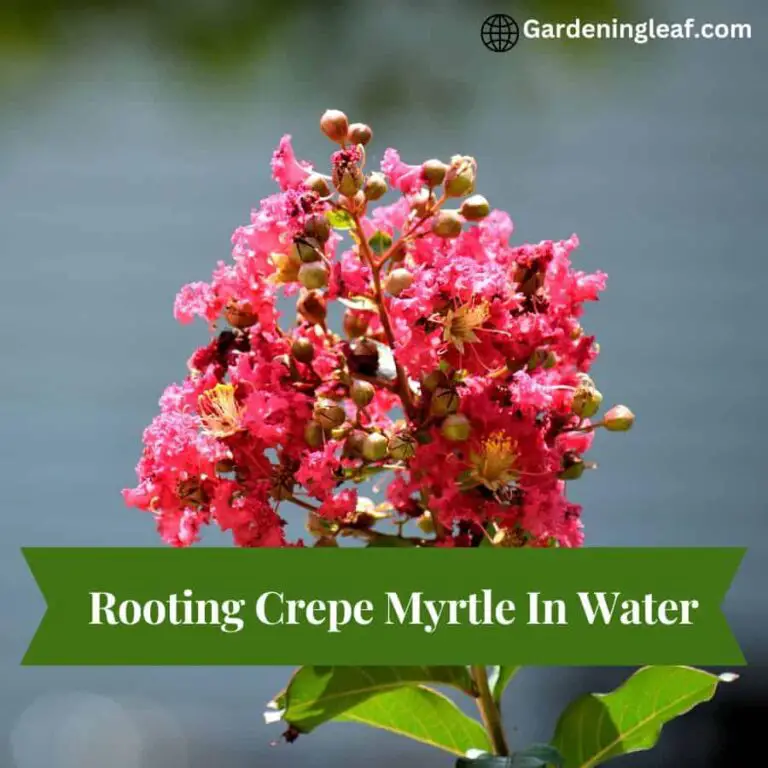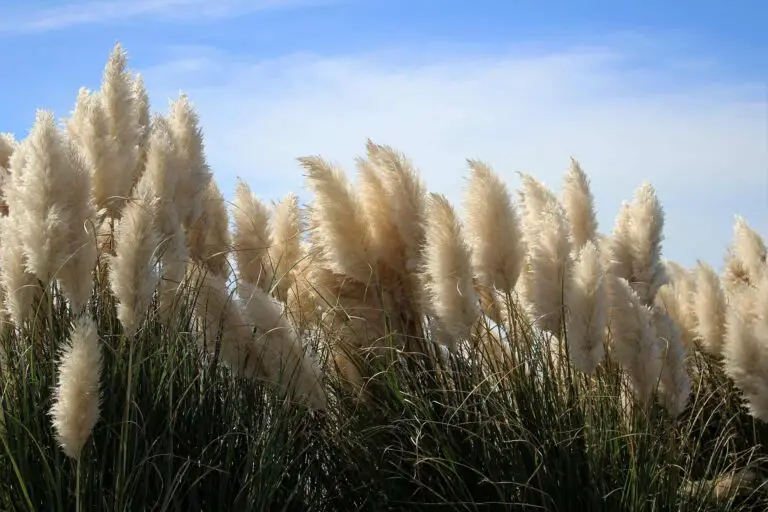Why is my crepe myrtle not blooming – Easy Solution
The Crepe Myrtle is one of the most popular flowering trees in the United States and for a good reason. Its vibrant colors and cascading blooms make it a visual feast for garden lovers.
However, if your Crepe Myrtle isn’t blooming as it should, it can be frustrating. But if your crape myrtle isn’t blooming, you may wonder why is my crepe myrtle not blooming and what could be causing it.
There are a few reasons your crape myrtle may not bloom.in this post, I will try to give you possible reasons and suggestions on how to solve those problems and get your crape myrtle flowering again.
Why is my crepe myrtle not blooming?
It’s summertime, and that means it’s crepe myrtle blooming season! Unfortunately, your crepe myrtle isn’t blooming as vibrantly as you’d hoped – but why?
Several factors may be at play if your crepe myrtle isn’t blooming as well as it should. Let’s explore the different possibilities below so you can help your crepe myrtle thrive and enjoy its summertime beauty!
Not enough light:

The most common issue Why is my crepe myrtle not blooming is it is not getting enough light. If you want to enjoy the vibrant blooms of your crepe myrtle this spring, make sure it’s getting the sunlight it needs.
Crepe myrtles require at least six hours of sunlight daily to grow healthy flowers. If your tree isn’t getting enough light, it may not be able to flower.
Move your tree to a brighter area of your yard or house to maximize its flower production. You can also Try using supplemental lighting to increase flower production. Late in the winter is the best time to relocate your tree.
The time when the tree is dormant. Doing this will ensure your tree’s blooms reach their fullest potential.
Incorrect pruning:
Another common reason crepe myrtles don’t flower is that they were pruned late in the season. When this happens, new buds meant to develop into flowers never really form. As a result, the tree won’t flower. Never prune a crepe myrtle before it blooms to prevent this from happening.
So, when do crepe myrtles bloom? Generally, they are the last flowering trees and shrubs to bloom. They are late bloomers; their flowers usually bloom just after other flowering trees.
To ensure that your tree blooms, it’s important never to prune it before it blooms. You should also keep an eye out when other flowering trees and shrubs bloom, as crepe myrtles usually bloom just after them.
Disease:
If you notice that your crepe myrtle isn’t blooming as expected, there is a good chance its pest is infected. If your crape myrtle shows signs of disease, like foliar spots or brown rot, it won’t be able to fight the infection and will likely lose its leaves and flowers.
If you’re noticing mold growth on the honeydew created by insects feasting on your plants’ sap, it’s likely due to common culprits such as aphids, scale insects, mealybugs, and whiteflies.
You’ll need to control these pests to get a handle on the issue. Consider using an insecticidal soap or a natural product such as neem oil to kill the insects and eliminate the mold problem.
There are several steps you can take to help treat the disease and restore the health of your crepe myrtle tree. First, identify the disease by doing a foliage inspection.
You’ll be able to recognize the severity of the problem and what kind of treatment is required. If you’re unsure how to do a foliage inspection, consult a professional. Secondly, treat the disease with a specific type of fungicide or pesticide.
Finally, prune the diseased branches to prevent them from spreading the disease.
Poor soil:
Another reason crepe myrtles might not bloom is that the soil around the tree isn’t healthy. If the soil isn’t good, it won’t be able to support the growth of a flowering tree. To ensure your crepe myrtle blooms, it’s important to test the soil for pH and nitrogen levels.
Moreover, poor drainage can also prevent crepe myrtle growth and blooming. To help your crepe myrtle thrive, make sure the soil is well-drained but moist. Additionally, remember to water the plant frequently and add organic matter to help improve drainage. These steps can also help create a fertile environment for your crepe myrtle and ensure it blooms!

Fertilizer Deficiency:
Another possible reason your crepe myrtle might not bloom is a fertilizer deficiency. If the tree isn’t receiving enough nutrients, a nitrogen deficiency may be the cause.
To help the tree bloom, apply fertilizer with a high phosphorus content. This will help ensure your tree gets the nutrients it needs to produce a beautiful bloom.
If your crepe myrtle has been in your garden for a few years, apply a slow-release fertilizer at the start of new growth in spring. This will give your plants the necessary nutrients to grow all season long.
In the spring and summer, follow this up with a light feeding twice a month for optimum growth. Always water your plants well after each fertilizer application to ensure that the nutrients are absorbed.
One common mistake gardeners make is using a fertilizer that is too high in nitrogen inhibiting flowering. When making your fertilizer selection, consider the needs of the tree and those of the plants in the surrounding flower beds. For best results, use a low-nitrogen fertilizer to promote healthy and beautiful blooms.
Poor watering
Another common problem why is my crepe myrtle not blooming is that it isn’t receiving enough water. In the spring and summer, make sure to water your tree frequently.
During these times, the plant is growing rapidly and may require more water than usual. Check the soil moisture levels regularly; if they start to drop below the level where growth can occur, it’s time to water again. Be sure to water from the bottom of the plant up to help prevent root rot.
Crape myrtles may be known for their drought tolerance, but they still need regular and deep watering during their first few growing seasons. To ensure their health and optimal growth, aim to water your crape myrtles once or twice a week during particularly hot weather. This will help ensure the roots have enough moisture to thrive.
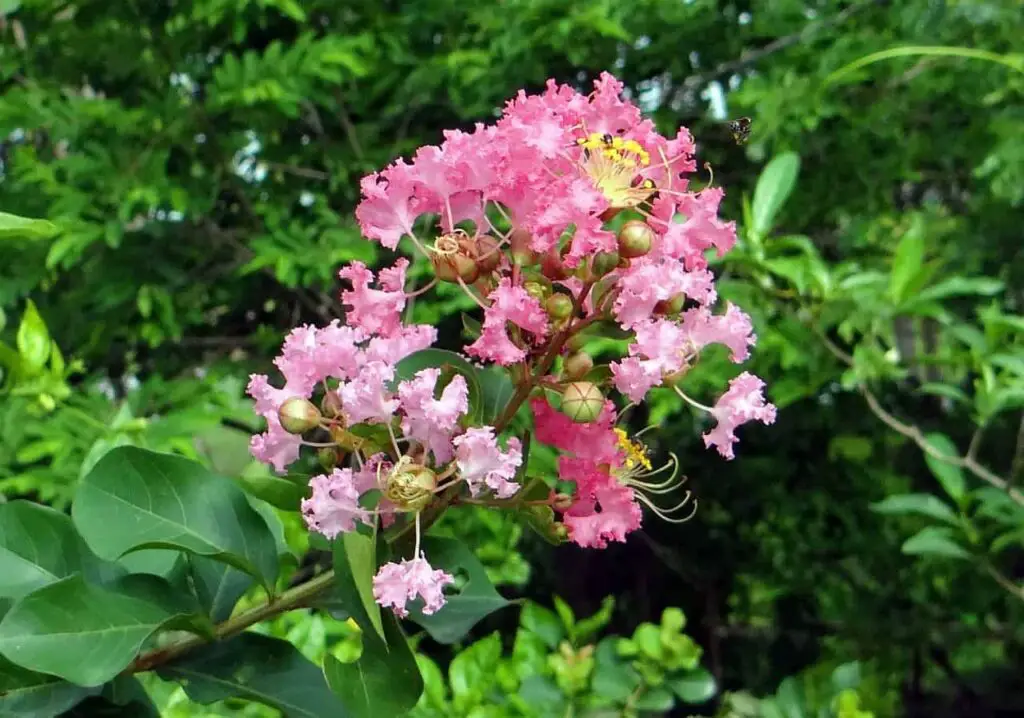
Poor caring
If you neglect your crape myrtle, that one of the reasons why is your crepe myrtle not blooming. Make sure to give your tree proper care to thrive and produce blooming flowers.
Prune off dead or diseased branches regularly, pay attention to fertilizer and watering schedules, and water from the bottom of the plant up to help avoid root rot. For keeping your crape myrtle in shape, regular pruning is also required.
Prune back the taller branches, so they don’t shade or obstruct shorter growth below them. Maintaining a well-groomed tree will help ensure blooming flowers for years to come!
Expecting flowers too soon
After planting, crepe myrtles may take up to three years to bloom. It’s preferable to wait until a tree has completely grown before expecting flowers. If you prune back the taller branches too early, your crape myrtle may not bloom. Give your crape myrtle plenty of water and fertilizer during the growing season, and be patient —it’ll reward you with beautiful blooms in the end!
Cold weather conditions
Crape myrtle is a highly resilient plant that can survive even in cold weather. However, the colder the environment, the more likely the Crape myrtle will struggle to produce blossoms.
In warmer climates, such as the southern states, you will often find Crape myrtle varieties with many blooms, whereas in colder regions, such as northern states, the same variety may produce fewer blooms.
On the other hand, if your warm climate region experiences a late freeze heading into the spring, this can also cause your Crape myrtle to struggle with blooming.
FAQs
What effects does cold weather have on crape myrtle trees?
In general, cold weather can stunt the growth of crape myrtle trees. If it is too cold outside and there is a lack of sun for your crepe myrtle tree to grow, it may not bloom as prolifically as it would if the weather was more temperate. Also, colder temperatures can cause branch dieback and decrease blooming activity. However, crape myrtles are highly adaptable and typically recover from cold weather.
Are crape myrtles drought-tolerant?
Yes, crape myrtles are quite drought-tolerant. However, regular and deep waterings are still necessary to ensure their health and continued growth.
What month do Crape myrtles bloom?
Crape myrtles typically bloom during the summer, from May to June and July. The exact timing of blooms can vary depending on the variety and climate, but in areas with warm summers, blooms often begin in late June and can last until the end of August.
Conclusion
The most common reason crepe myrtle is not blooming could be various factors, such as too much shade, lack of water, or incorrect pruning. To ensure that your crepe myrtle will bloom in the future, it is important to provide your plant with the right conditions, such as adequate sunlight and water, and to prune it correctly. With the right care and attention, your crepe myrtle will be able to put on a beautiful blooming display for years to come.
Source :- https://hgic.clemson.edu/factsheet/crape-myrtle/ https://www.gardendesign.com/trees/crape-myrtle.html


